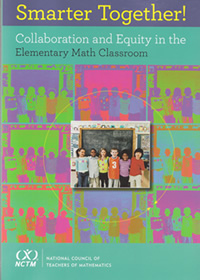Math anxiety is real and it affects about half of the U.S. population. Brain imaging has shown us that stress gets in the way of working memory, which is typically required to do mathematics. In fact, math anxiety seems to affect people with a high amount of working memory most! One of the main sources of math anxiety is the stress produced by timed tests (Boaler, Education Week, 7/3/2012).
I used to have my students take timed multiplication and division tests to practice fact (computational) fluency, but I don’t do this anymore. Time is too heavily factored into the measure of fluency in that equation. Rather, I have students learn and practice strategies for working with numbers so that they can be fluent.
Here’s a tip for developing the habit of seeing patterns in numbers: spend more time looking for patterns in math homework and throughout school mathematics. School math is designed to illustrate patterns! Though this is sometimes a weakness in that a framework is often given and problems are explicitly trying to illustrate relationships, this will help students (who attend to these patterns) develop strategic thinking.
Take for example two problems from last night’s homework.
- Kaden divided 96 by 12 and then multiplied by 6. Write an expression to show the problem. Then, solve the problem and write an equation.
When most students first approach a problem like this, they begin to decode or solve it step by step. First they do 96 divided by 12 getting… what is that anyway? And then they multiply by 6.
When I look at that problem, the first thing I notice is that 96 is being divided and multiplied. These are inverse operations – meaning that they undo each other. If the problem was 96 divided by 12 times 12, I hope we would just leave it at 96 because we all know this doing and undoing relationship. In this case, the situation is only slightly less humorous (mathematically speaking). If we are going to divide 96 by 12 and then multiply by 6, then we are undoing the dividing by 6! This leaves a much simpler expression: 96 / 2 (96 divided by 2). The equation I would write would read 96 / 12 * 6 = 96 /2 = 48. That’s number fluency.
- 81 – (9 * 7)
Here too, most of my students given this for homework followed the “proper steps” and dutifully multiplied 9 * 7 and then subtracted that from 81. This misses a beautiful relationship embedded in the problem. If you notice that 81 is also a multiple of 9, you can rewrite the problem in the following way.
81 – (9 * 7) = (9 * 9) – (9 * 7)
We are subtracting 7 groups of 9 from 9 groups of 9. The difference is 9 * 2.
When most people think about what mathematics is, they think about memorization and procedures. I think this is what it felt like coming through the system for a lot of people in my generation. Today, in many classrooms around the world, math is taught around understanding ideas, discovering relationships, exploring patterns, and developing strategic thinking and problem solving skills.
The difference between memorizing a bunch of rules and procedures and coming to understand mathematical ideas and principles is profound. Memorization requires no real reflection or ownership. There is often very little connection between the learner and the material. As a result, the learning is shallow and has very little application outside of school for that student. Teaching number fluency with conceptual understanding on the other hand requires more engagement with the material. It challenges students to come to terms with a deeply interconnected and vibrant discipline. I believe it also opens the door to a real relationship with mathematics that can help students avoid math anxiety.
Mathematics is sometimes called the science of pattern and order. This is exactly what draws people to math – let’s keep that perception of the subject alive when we are actually doing math work.




